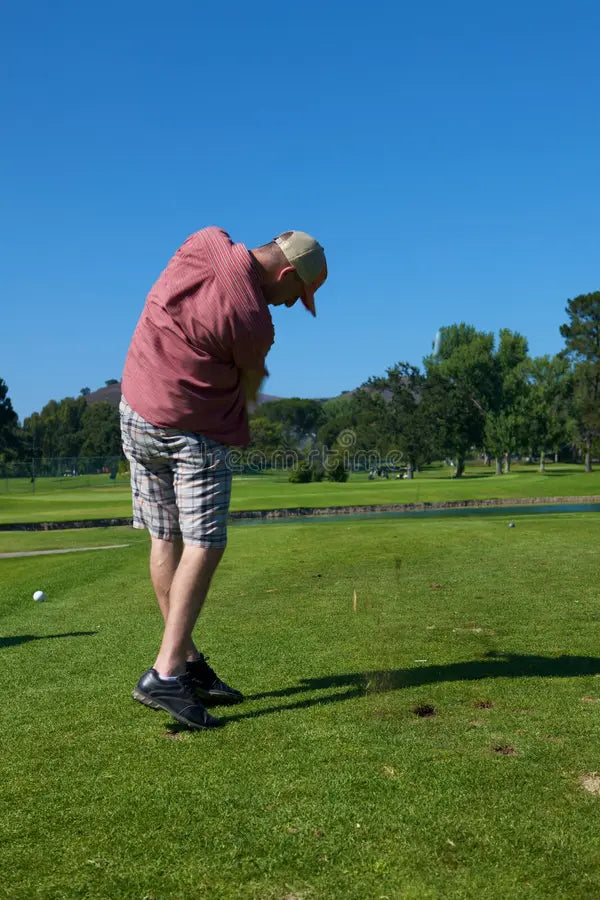
Golf Swing Speed Training: How to do it Right
How to Improve Club Head Speed
Golf swing speed training is one of the most talked about things in golf right now, as more players realize the importance of speed. But not all training is created equal. In this guide, we’ll break down why improving swing speed is so important, the right way to train, and common mistakes golfers make when chasing distance.
Why It’s Important to Start a Golf Swing Speed Training Program
Sure, the obvious reason to train swing speed is to hit the ball farther—that’s every golfer’s goal. But swing speed brings more than just distance. It gives you:
-
The ability to choose different clubs on longer holes
-
A scoring edge on tough par 4s and par 5s
-
Extra distance without feeling like you’re overswinging
In other words, the swing speed gained will help with all aspects of your game.
Strength and Conditioning for Golf
The best way to gain swing speed is through good golf workouts that combines mobility, strength, power and speed. Focusing on all four areas ensures your body can move efficiently and generate speed safely.
Get Started for FREE
A structured program that focuses on building full-body strength and mobility is the key to getting started on your golf fitness journey. To make it simple, I’ve created a FREE golf workout PDF that shows you exactly what to do and how to do it. This program includes three strength and power days, along with four mobility routines to help you move better, swing more efficiently, and prevent injury.
Get your free sample program here: Get Your Free Golf Fitness Program - J Golf Fitness
Dedicated On-Ball Speed Days
Once you’ve followed a proper golf workout routine and established a foundation of strength and mobility, you can start incorporating on-ball golf swing speed training. Dedicating specific speed days where you’re actually hitting golf balls is far superior to relying solely on a golf swing speed trainer. Hitting real shots allows you to train your body in the exact movements of the swing, improving timing, mechanics, and transfer of power in a way that gadgets simply cannot replicate.
How to Train On-Ball Swing Speed
You train on-ball swing speed by hitting golf balls while intentionally working to increase both your clubhead and ball speed. This approach is similar in concept to popular golf swing speed training aids, but it has a major advantage—you avoid the negative effects of damaging your timing. Here is a sample protocol that you can follow to increase your distance.
Sample On-Ball Swing Speed Protocol
Warm-Up (10–15 minutes)
Before any swing speed session, it’s essential to prepare your body to prevent injury and maximize performance:
-
Dynamic Mobility Drills (5 minutes)
-
Shoulder rotations: 3 x 12
-
Hip circles: 3 x 12 each side
-
Thoracic spine twists: 3 x 12
-
-
Activation Exercises (5–10 minutes)
-
Bodyweight squats: 2 x 10
-
Glute bridges: 2 x 10
-
Band Rotations: 3 x 6 each side
-
On-Ball Swing Speed Sessions (Monday, Wednesday, Friday)
-
Number of Balls: 3 x 20 ball sets
-
Goal: Hit each ball as fast as possible while maintaining proper mechanics
-
Optional Tracking: If available, use a launch monitor like Trackman to monitor clubhead speed, ball speed, and smash factor
-
Rest Between Sets: 3-5 Minutes
How to Progress Your On-Ball Swing Speed Training
To continue improving swing speed safely and effectively, it’s important to follow a structured progression. Start by tracking your average clubhead and ball speed each session so you can monitor improvements over time.
Weekly Progression
-
Add Volume Gradually: Begin with 60 balls per session, then add 10 extra shots each week.
-
Maintain Quality: Focus on maximum-speed swing while keeping proper mechanics; don’t sacrifice form for extra reps.
Deload Weeks
Every fourth week, reduce your frequency to one session of 50 shots. This “deload” week allows your body to recover while maintaining speed gains, preventing fatigue and overuse injuries.
Tracking
-
Use a launch monitor if available to measure clubhead speed, ball speed, and consistency.
-
Record averages each session to see measurable improvements over the course of a few months.
-
Small, consistent increases in speed over time are far more effective than trying to swing faster every session.
By progressing gradually and including recovery weeks, you’ll safely maximize swing speed, power, and distance while minimizing the risk of injury or timing disruption.
Conclusion
By building a foundation of strength, mobility, and stability, and incorporating dedicated on-ball speed sessions, you’ll see real, measurable improvements in both clubhead speed and distance. Track your progress, increase volume gradually, and include recovery weeks to stay healthy while maintaining proper swing mechanics.
If you’re ready to take your game to the next level, check out my custom golf training programs, designed to help golfers of all skill levels increase distance, improve mobility, and build a stronger, more efficient swing.
Learn about my custom training programs: 1-on-1 Training – J Golf Fitness

